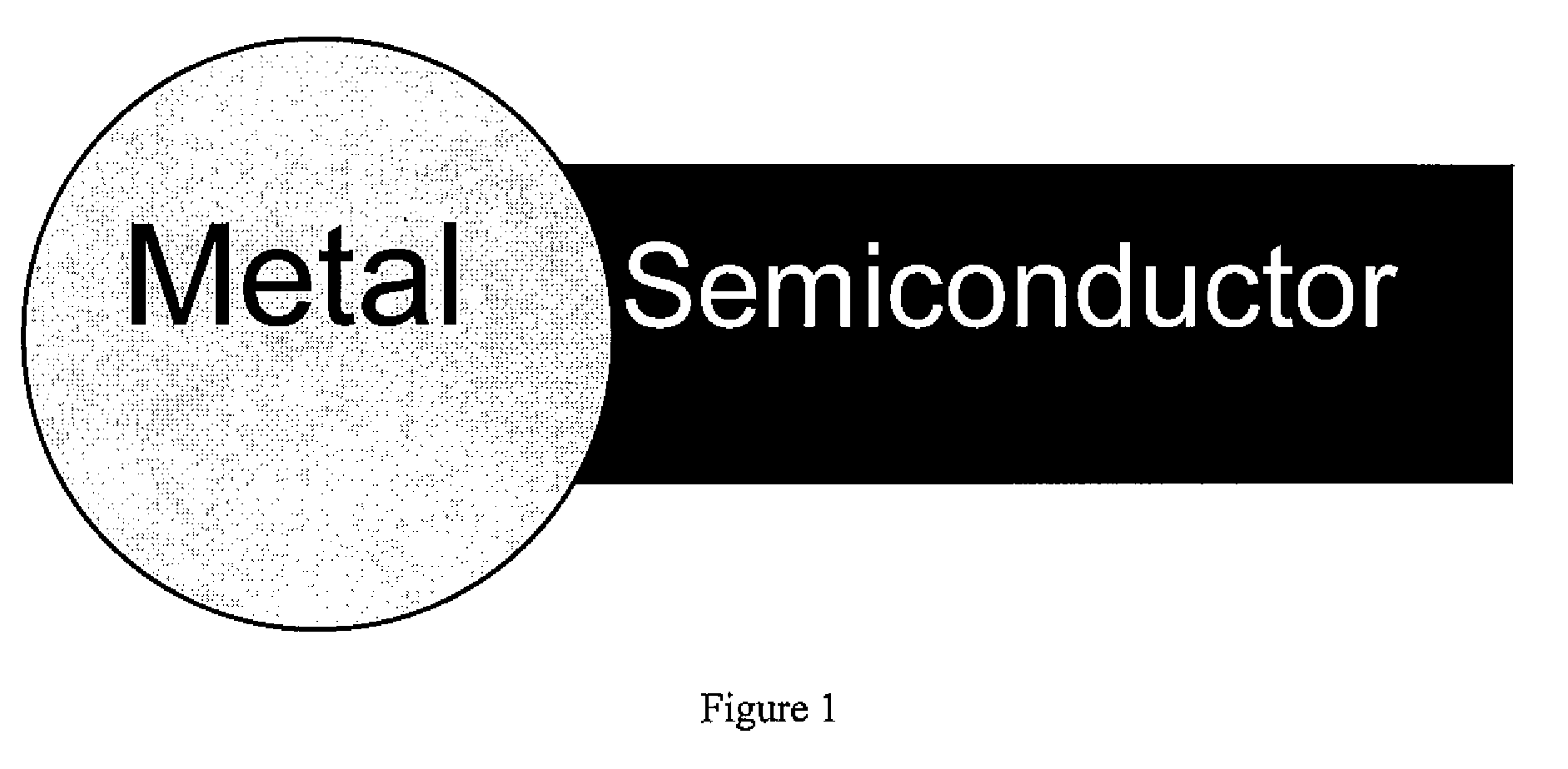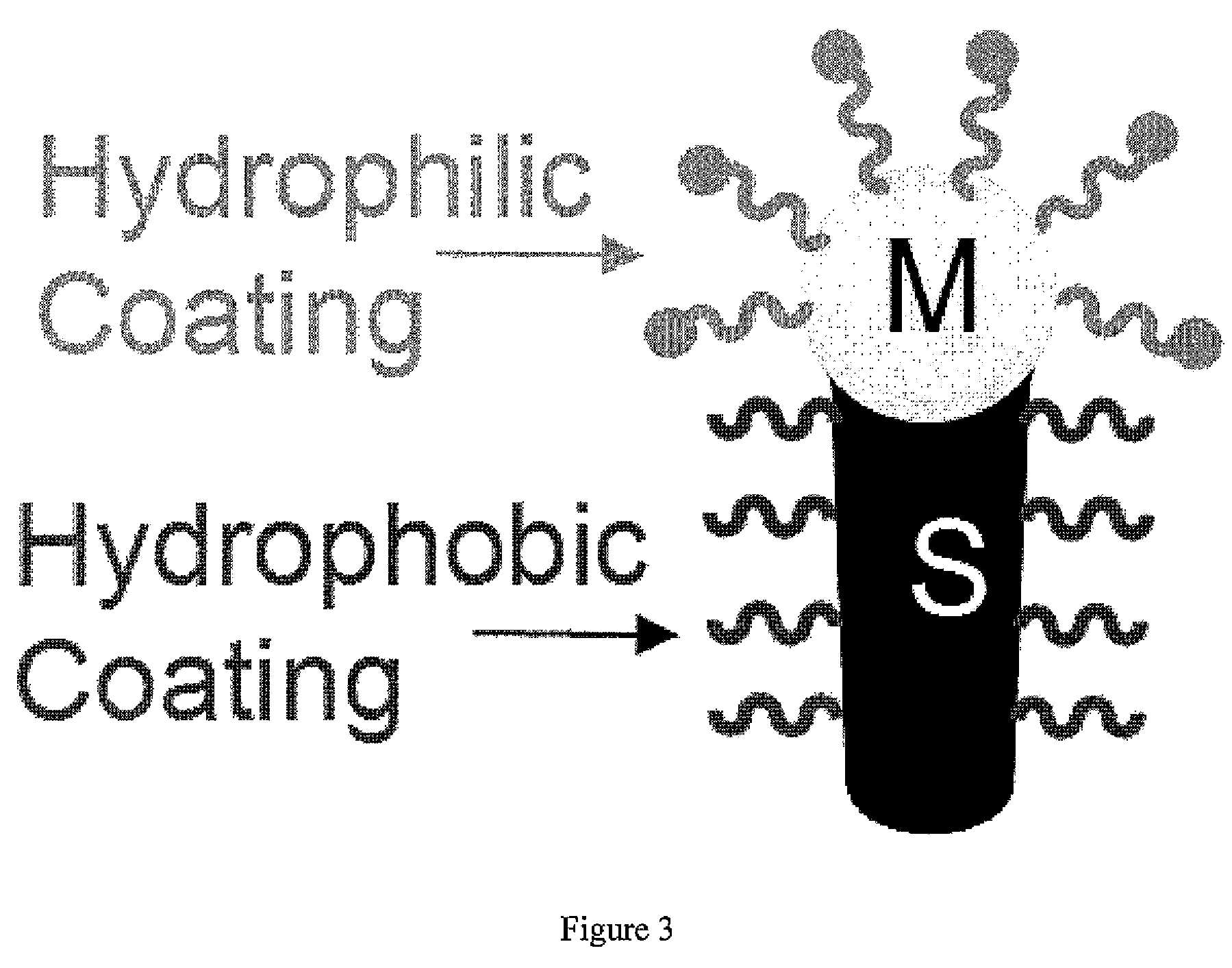Functional abiotic nanosystems
a technology of abiotic nanosystems and nano-organisms, applied in the direction of eye implants, prosthesis, pharmaceutical delivery mechanisms, etc., can solve the problems of partial or complete blindness, unsatisfactory macroscopic implants, and limited vision of blind patients, and achieve the effect of imparting photoreactivity
- Summary
- Abstract
- Description
- Claims
- Application Information
AI Technical Summary
Benefits of technology
Problems solved by technology
Method used
Image
Examples
examples
[0051]FIG. 8 shows high-resolution transmission electron microscopy images of CdSe / Au nanometer-sized semiconductor / metal hetero-junctions. Both CdSe and gold nanocrystals have individually been widely applied in biological labeling in cells, tissues, and animals. Integration of both CdSe and Au into one nanometer-sized composite leads to nanoscale Schottky diodes.
[0052]The CdSe / Au integrated nanometer-sized composites are synthesized through a two-step procedure. First, CdSe nanorods were formed by the reaction of Cd and Se precursors in a mixture of trioctylphosphine oxide and an alkylphosphonic acid. Due to the Wurtzite crystallographic structure of the CdSe, (001) and (00 1) facets of the CdSe have enhanced chemical reactivity compared to the {011} facets, therefore rod-shaped CdSe nanoparticles (elongated along (001) direction) can be formed.
[0053]Second, the CdSe rods suspension is treated with a mixture of gold chloride, didodecyldimethyl-ammonium bromide, and hexadecylamine ...
PUM
 Login to View More
Login to View More Abstract
Description
Claims
Application Information
 Login to View More
Login to View More - R&D
- Intellectual Property
- Life Sciences
- Materials
- Tech Scout
- Unparalleled Data Quality
- Higher Quality Content
- 60% Fewer Hallucinations
Browse by: Latest US Patents, China's latest patents, Technical Efficacy Thesaurus, Application Domain, Technology Topic, Popular Technical Reports.
© 2025 PatSnap. All rights reserved.Legal|Privacy policy|Modern Slavery Act Transparency Statement|Sitemap|About US| Contact US: help@patsnap.com



